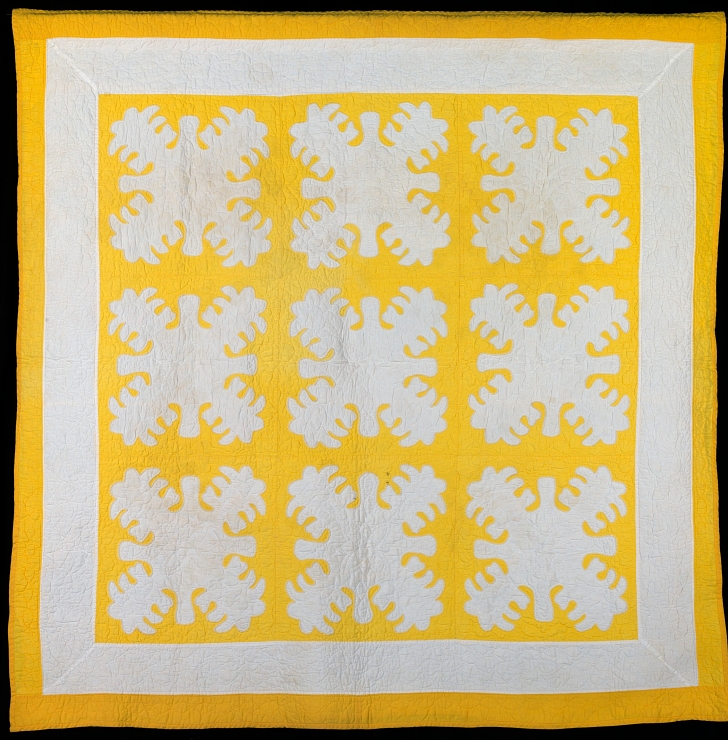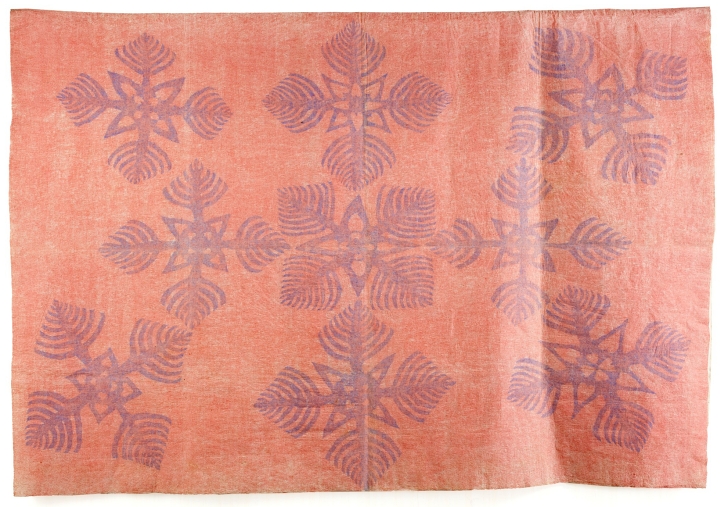Antique Spotlight: Hawaiian Kapa Kuiki Quilts
These stunning quilts have a long history.
When we see an old quilt many of us are reminded of our parents or grandparents and of days gone by. Patchwork quilts in calico patterns and crazy quilts are symbols of the past for many people and their softness from decades of washing is a true comfort. But, the quilting traditions of the US mainland are quite different from those that evolved in Hawaii. Over the past 2 centuries Hawaiian artists have been creating stunning quilts with surprisingly modern designs that are unlike anything you’ll find in most antique stores.

The history of Hawaiian quilt making dates back to the 1820s when missionaries from the mainland set up on the islands, bringing with them this traditional European craft. The locals adapted quilting to suit their tastes and the confines of island living. Limited fabric choices meant that quilters developed 2 or 3 color designs using solid fabrics instead of printed material.
But, Hawaiians already a method of making bed coverings not unlike some aspects of quilting. Kapa moe was the traditional process of combining layers of barkcloth (originally made from actual bark unlike the 1950s fabrics of the same name) to make a warm blanket or decorative item.

Hawaiian quilting, known as kapa kuiki, uses motifs that are often created around a central motif that spans outward in rays like a snowflake. And the designs are made using the same cut-and-fold technique that we learn as children to make paper snowflakes. Doing it this way ensures that each side of the pattern is a near-perfect mirror of the other.

Each quilt is inspired by the flora and fauna of the islands, with most designs centering on flowers and leaves. The royal family of Hawaii (pre-annexation) and various flags have also been created in quilt form by Hawaiian quilters. These stunning designs are rendered in contrasting colors, often a vibrant solid on a cream or white background.
Authentic Hawaiian quilts are usually assembled and stitched by hand as the complex curved designs take a lot of skill and easing of fabric to achieve. The quilted areas often follow the curves of the central design in what is known as the “contour” or the “echo”. Each line of quilting surrounds the centerpiece in waves that reinforce the visual pattern of the middle section. One can’t help but to see the influence of the ocean in this magnificent quilting technique.

The painstaking process of making a Hawaiian quilt, an emblem of slow living if ever there was one, can take up to two years to complete. While patterns can be passed down through the generations, many quilts are completely unique designs created by the artist.
Designs can come from nature, but frequently also have personal meaning within families or can came from the imagery of especially powerful dreams. The rich culture, the unique designs, and the handmade nature of these quilts have made them desirable additions to museums around the world, as well as being costly investments that reflect the hard work of the creator. On the conservative side antique Hawaiian quilts can sell for upwards of $1,000 and smaller pieces like pillows and baby blankets can sell for $200-$400.
That being said there are specimens that can cost up to $5,000, so this is an investment that can appreciate handsomely depending on the condition of the items and the area you’re in.

Be warned: some well known decor companies have started making quilts in the Hawaiian style which are not made by Hawaiian artisans so be careful when purchasing quilts that have these designs. Do try to discover some provenance if possible and check for signs of wear and age like fabric worn thin around joins, unevenly faded colors, and hand stitching as hallmarks of true vintage and antique Hawaiian quilts.
SKM: below-content placeholderWhizzco for DOT

